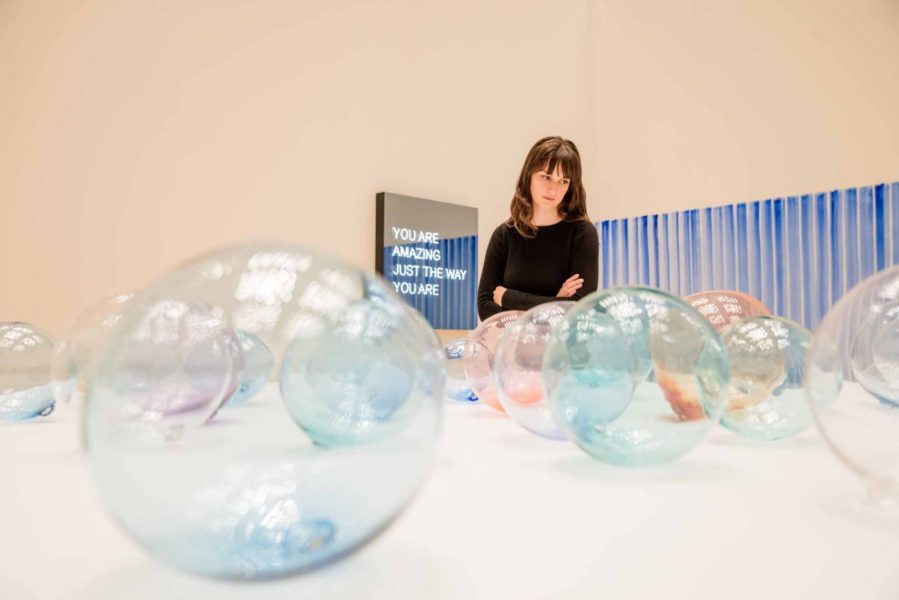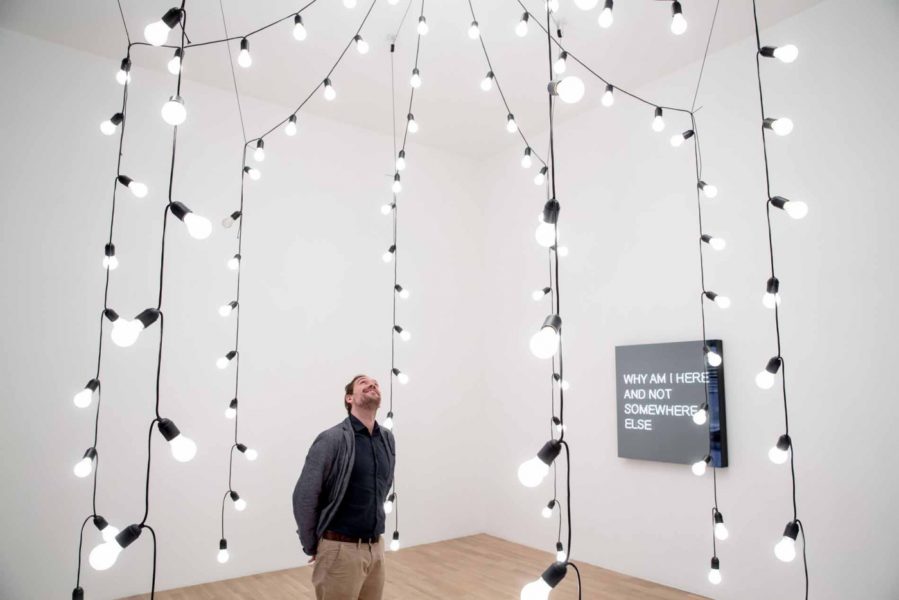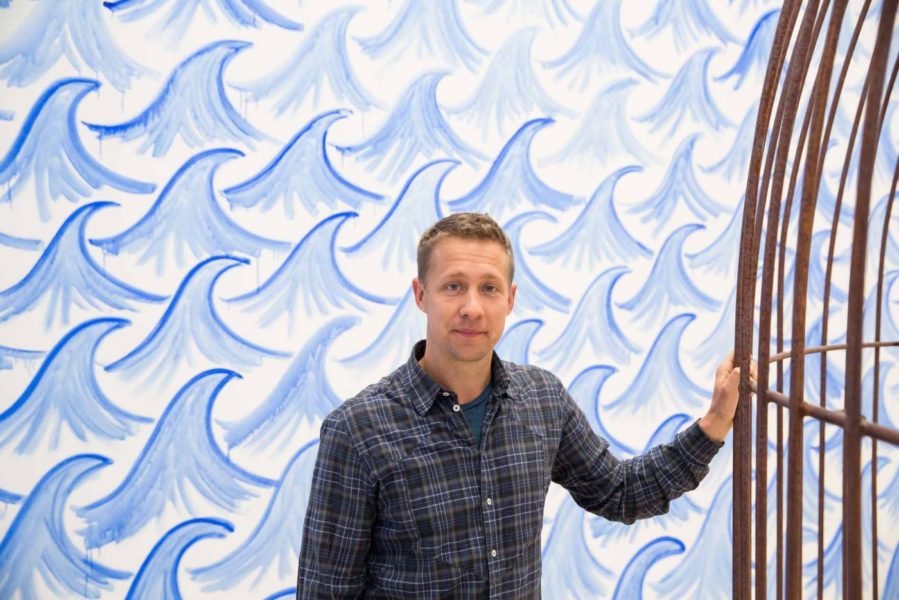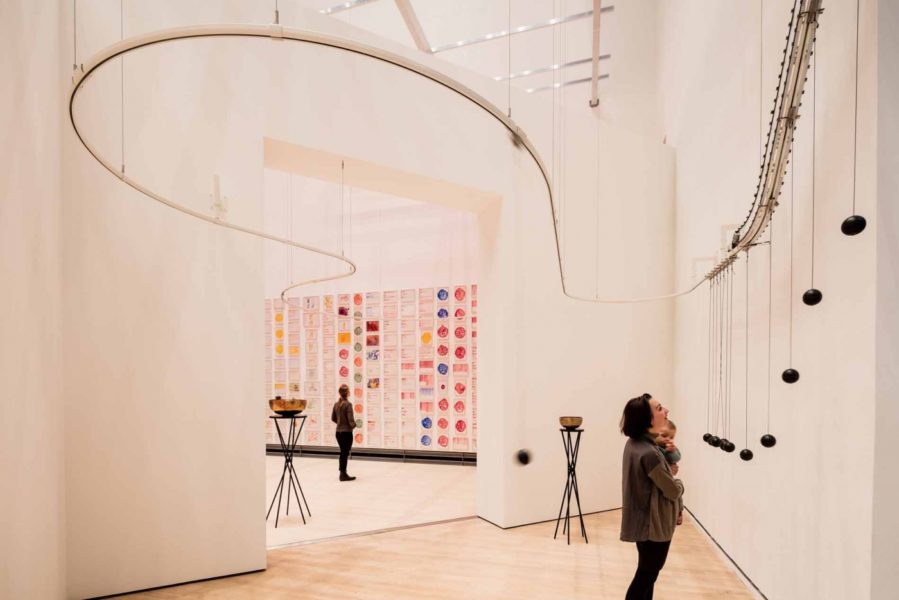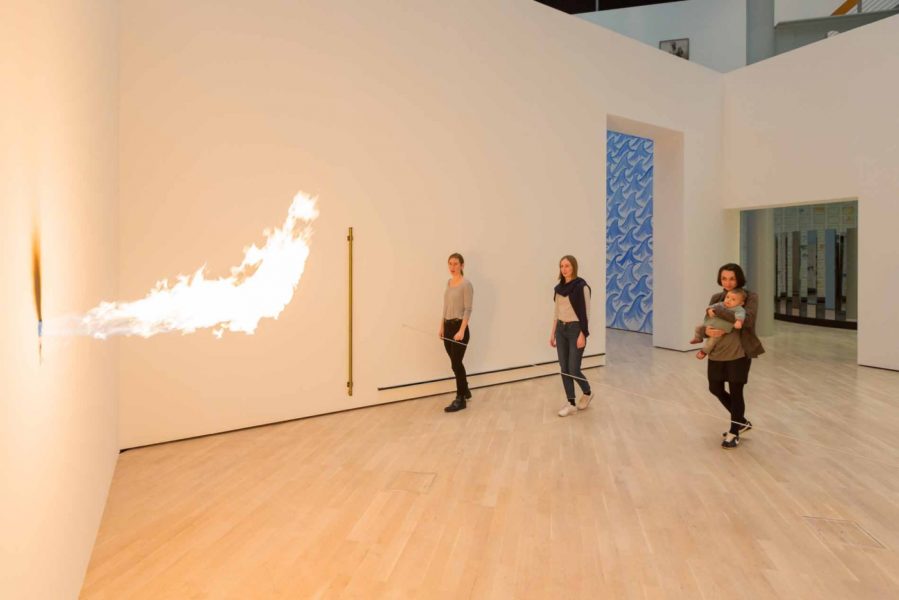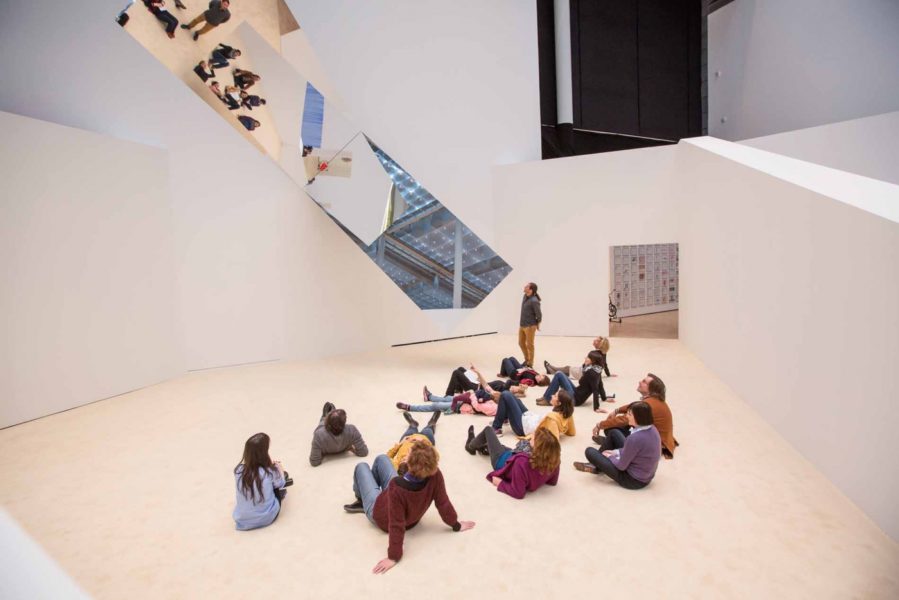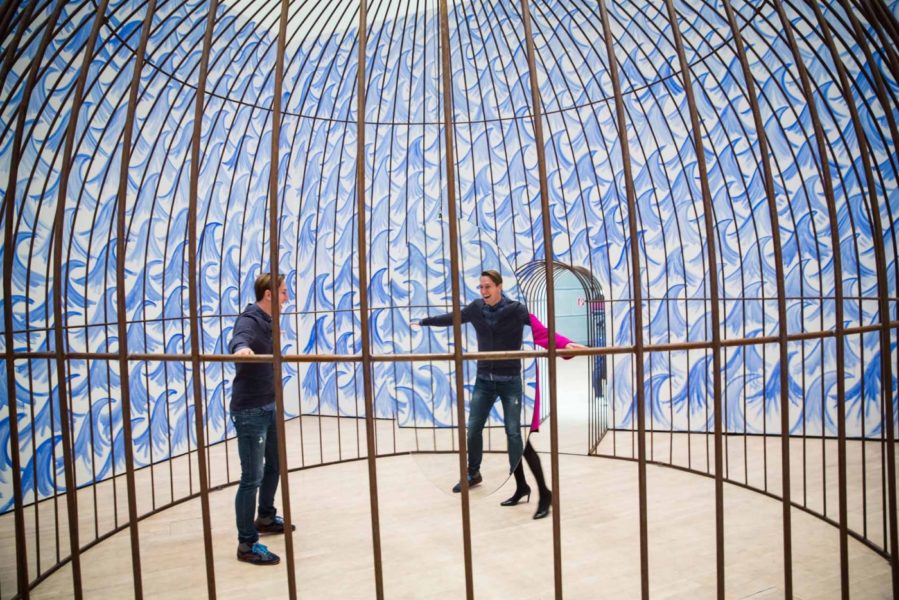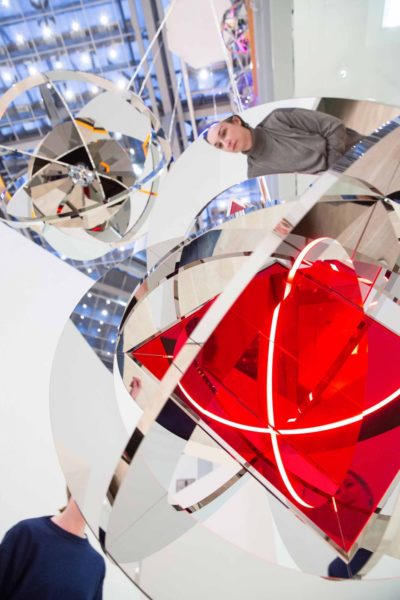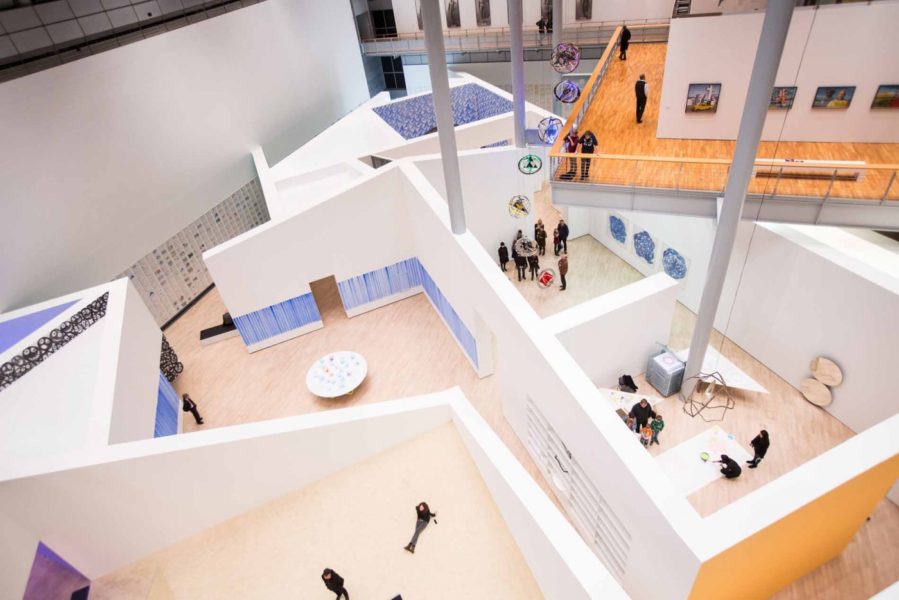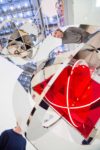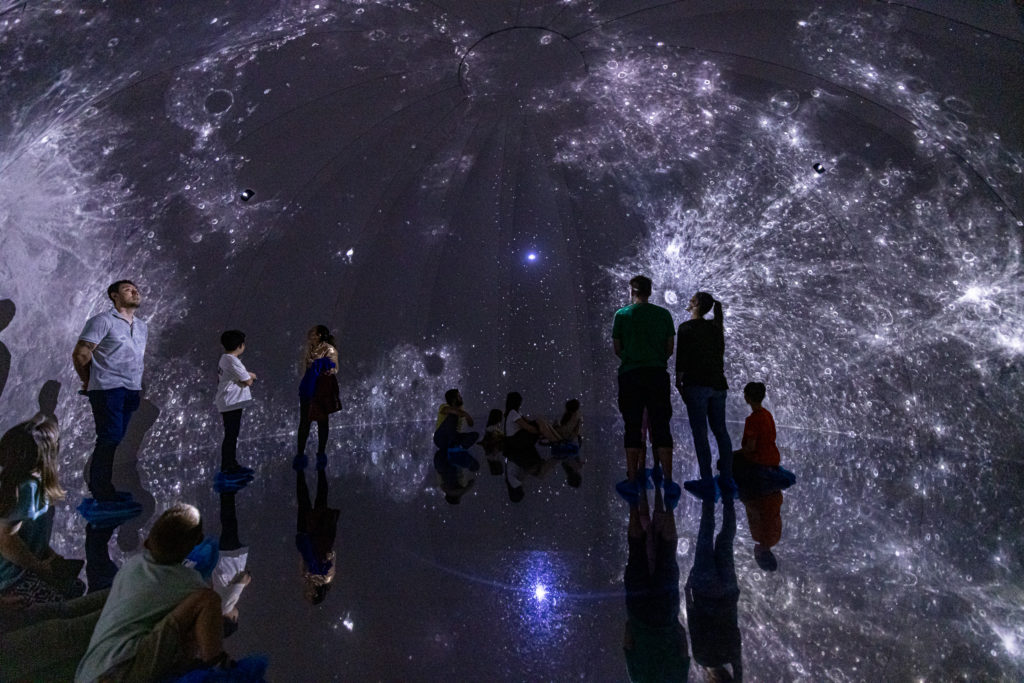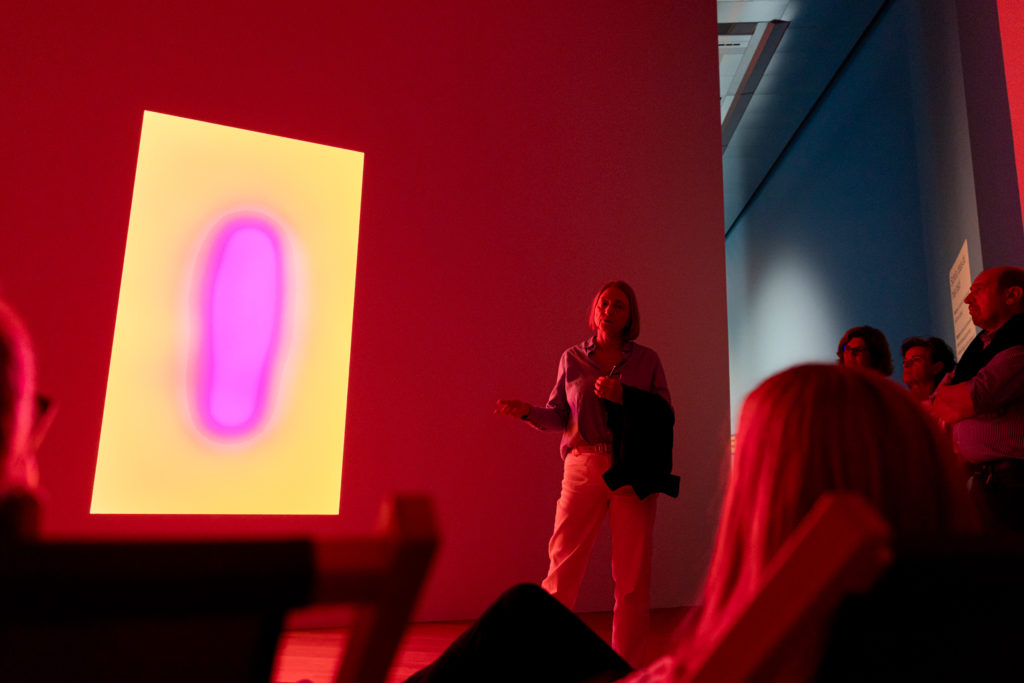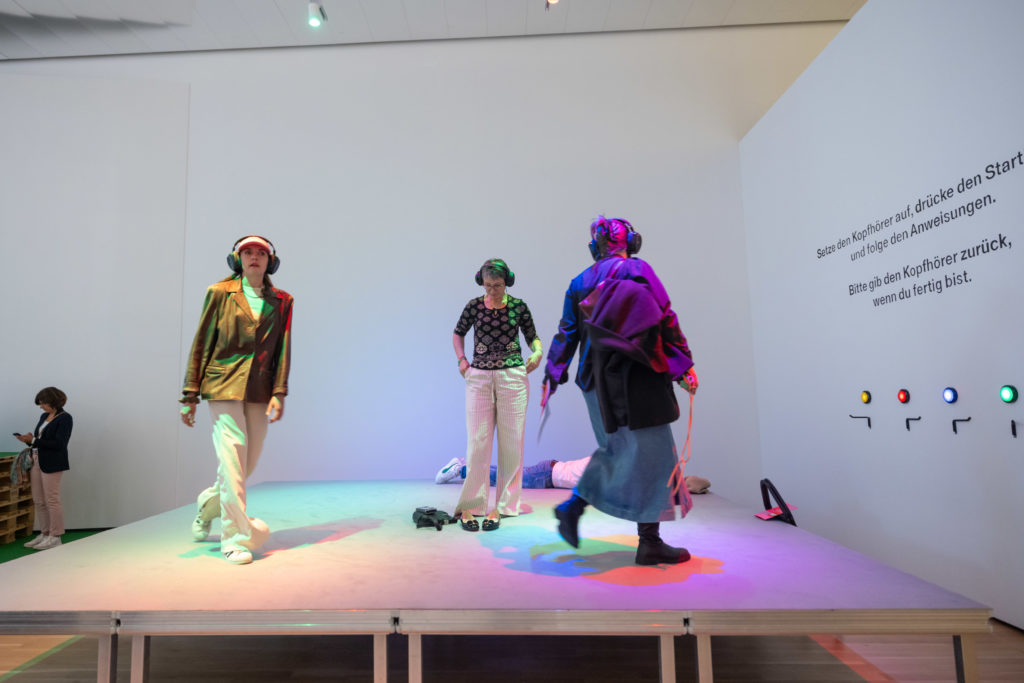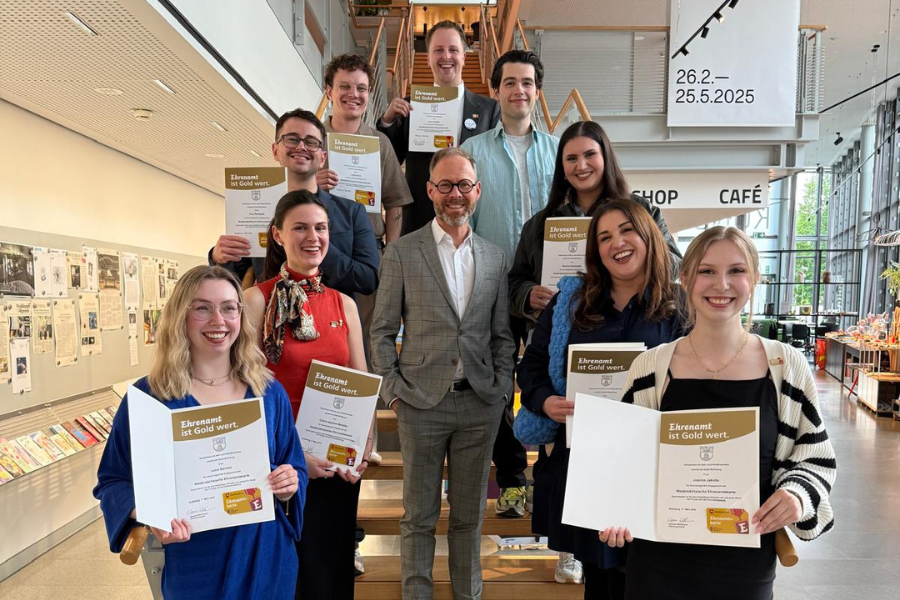Jeppe Hein
This Way
Installationviews
Info
Which direction? Right or left or straight ahead? The Danish artist Jeppe Hein (b. 1974) does not make this decision for the visitor. In his largest exhibition to date he purposefully disregards conventional exhibition practice by transforming the Kunstmuseum’s hall into a labyrinth comprising large, small, triangular, rectangular or polygonal spaces, narrow and broad paths, dead-end streets, intersections and squares.
“This Way” addresses these external and internal paths. While several of Hein’s works cover some distance themselves other pieces set the visitors in motion. There are ways that lead to an understanding of the artworks, ways through the history of art when associative comparisons make themselves evident; emotional ways when the task at hand is to make a decision and let oneself in for the artworks; social ways when one takes up the dialogue with other visitors or ways of reflection and recognition when the questions Jeppe Hein poses himself are embraced by the viewer who endeavors to find his own answer. Jeppe Hein unlocks a very special way, one that is usually closed: the way to the artist himself.
The exhibition is marked by Jeppe Hein’s very personal way, which has been determined by an existential search after being diagnosed with burnout in December 2009. An essential part of his way back to health has been the 3253 watercolors that line the labyrinthine spatial structure of “This Way.” They are mood sketches, symbols, thoughts, emotions, messages, insights, cries for help, fears, desires, visualized breathing exercises, swirls of color – a movingly honest inner map of Jeppe Hein’s soul.
Meditation, concentration and breathing exercises as well as yoga now shape Jeppe Hein’s everyday life and have had an influence on his art. The scope of his materials has expanded to include the watercolor, whose waves and faces fill entire walls in the exhibition for the first time. For those familiar with the aesthetics of Jeppe Hein’s minimalistic works, this new side of his oeuvre will come as a surprise. Sound, resonance, silence, fragrance or breathing mark his recent pieces in which his dealings with Buddhism and Hinduism are evident. Made especially for the show, his large piece Chakra Enlightenment that hangs like a spiral in the middle of the exhibition hall, represents Jeppe Hein’s personal interpretation of the seven chakras. The “Breathing Watercolours” likewise result from breathing techniques that engulf the wall in “This Way”—one brushstroke one breath.
But Jeppe Hein does not demand that viewers share his own spirituality. Instead, everyone is offered the same immediate accessibility to his works. An intuitive, physical and emotional perception of them is of greater importance for the artist than a contentual or intellectual approach. “This Way” is conceived as a diversified field of experience through the combination of new site-specific pieces and his previous works: loud and soft, subtle and aggressive, fast and slow, spiritual and material. These shifts in mood, tempo and energy provide a challenge to the mind, the body and the senses. Being in the moment is what Jeppe Hein is concerned with: “I am right here right now.”
This unburdened experimental possibility of approaching Jeppe Hein’s art is closely related to the essence of his work, namely its social function. The artist addresses people of all ages, backgrounds, and levels of education. He not only promotes a dialogue between work, viewer and surroundings but also creates situations where people encounter each other, playfully generating vibrations that confront the desire for social resonance which permanently accompanies us while we try to find our own ways. In the digital age Jeppe Hein employs experiences of analog communications.
The exhibition is supported by Volkswagen Financial Services AG.
